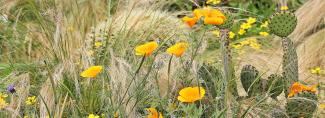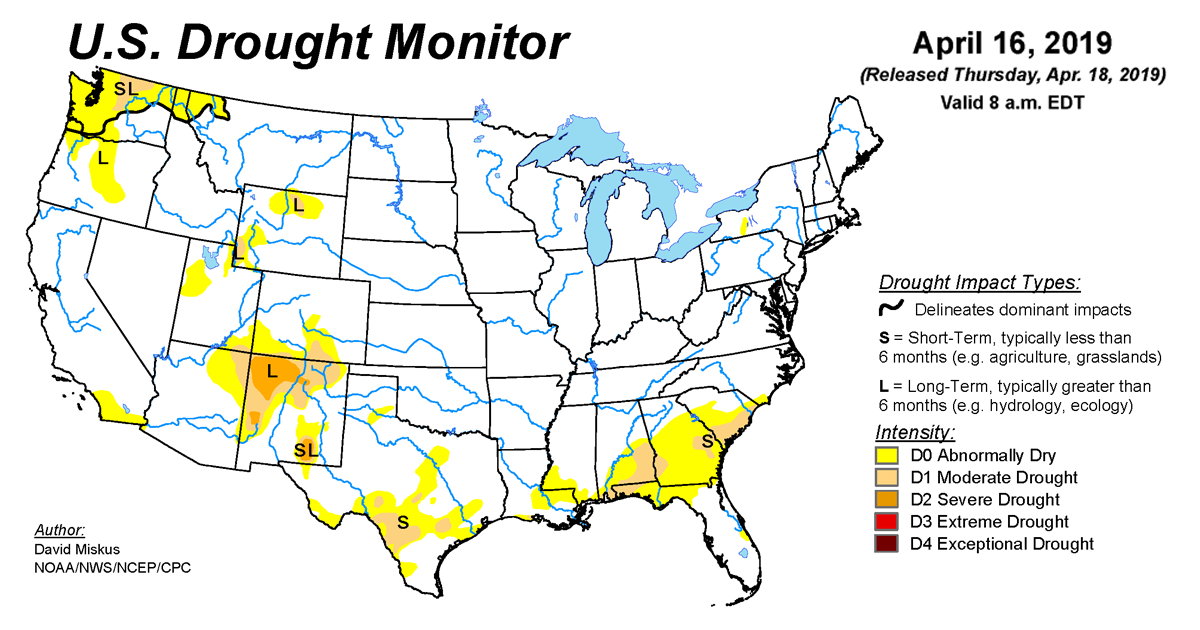
According to the April 16, 2019, U.S. Drought Monitor, moderate to exceptional drought covers 3.8% of the United States, a decrease from last week’s 4.3%. The worst drought categories (extreme to exceptional drought) stayed the same as last week—0%—the fourth week in a row that this has occurred.
Two rapidly-moving, strong storm systems brought severe weather and widespread precipitation to many areas of the contiguous United States, including heavy snows to parts of the north-central Rockies, north-central Plains, and western Great Lakes region. In the Northwest, moderate precipitation falling on an unseasonably late (and above-normal) mountain snowpack (due to a minimal melt from a cold spring) produced near- to record high stream flows in much of Oregon and southern Washington.
Widespread precipitation fell across Idaho, Montana, northeastern Nevada, Utah, and Wyoming. The Plains saw moderate to heavy rains that moved into the lower Mississippi and Tennessee Valleys. South Dakota was buried under heavy snow, while moderate to heavy snows fell over Minnesota, Wisconsin, northern Michigan, and northern Illinois. In contrast, most of the Southwest, extreme southern, central, and extreme northern Plains saw little or no precipitation.
Abnormal dryness and drought are currently affecting over 39 million people across the United States—about 12.8% of the country’s population.

The full U.S. Drought Monitor weekly update is available from Drought.gov.
In addition to Drought.gov, you can find further information on the current drought as well as on this week’s Drought Monitor update at the National Drought Mitigation Center. See their recent news releases.
The most recent U.S. Drought Outlook is available from NOAA’s Climate Prediction Center and the U.S. Department of Agriculture provides information about the drought’s influence on crops and livestock.
For additional drought information, follow #DroughtMonitor on Facebook and Twitter.



